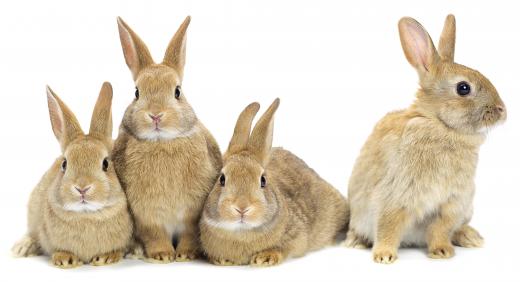What is r/K Selection Theory?
 Michael Anissimov
Michael Anissimov
R/K selection theory is a popular ecological theory developed by Robert MacArthur and E. O. Wilson from their 1967 work on island biogeography. The name is based after variables in an equation used by MacArthur and Wilson that relates the growth rate of various organisms to the carrying capacity of the environment. Although the theory was introduced in 1967, it didn't catch on until the 1970s. Although some scientists have pointed out a few holes in the theory, it is still used casually and widely by biologists and zoologists.
The key idea of r/K selection theory is that evolutionary pressures tend to drive animals in one of two directions — towards quickly reproducing animals whose specialty is to adopt as many niches as possible using simple strategies, and slowly reproducing animals who are strong competitors in crowded niches and invest substantially in their offspring. These are referred to respectively as r-selected and K-selected species, because the former rely more on growth rate while the latter restrict themselves to effectively exploiting the existing carrying capacity of the environment.

The logic of r/K selection theory further argues that r-selected species do best in unpredictable environments, where specialized adaptations are unhelpful, while K-selected species do well in more predictable environments, where large gains can be made through specialization. Characteristics useful for r-selected species include small size, fast reproduction, short generation time, ability to disperse offspring widely, and an economical approach to nervous system or other auxiliary complexity. Characteristics useful for K-selected species are all the opposite. To oversimplify, r/K selection theory may be thought of in terms of "quality vs. quantity."

Species that qualify as r-selected are naturally the most numerous, and include the vast majority of all life — bacteria, diatoms and other planktonic animals, most insects and smaller arthropods, crustaceans like copepods and barnacles, many birds, rodents, and rabbits. K-selected species are less numerous in terms of biomass — excepting humans and our pets and livestock — but possess considerable diversity and complexity. Examples would include elephants, whales, humans, and tigers. Some smaller animals use K-selected strategies, like the Arctic Tern and the Degu (a rodent).
AS FEATURED ON:
AS FEATURED ON:















Discussion Comments
It's interesting to see this theory applied to politics. "The Evolutionary Psychology Behind Politics" is very eye opening.
Post your comments